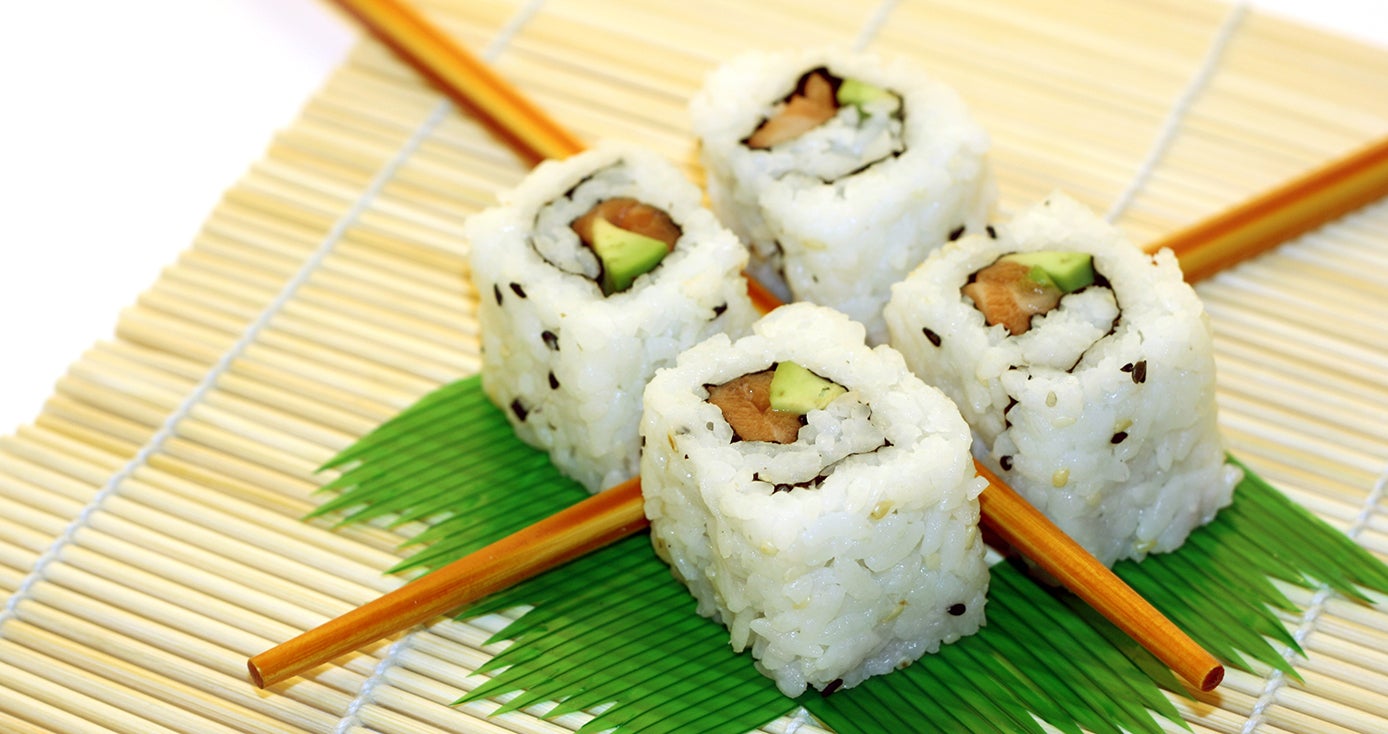
Subscribe to Pittwire Today
Get the most interesting and important stories from the University of Pittsburgh.A New Way to Look at Lung Infections—Like Rice
When short-grain rice is compressed and formed to make sushi, it doesn’t return to its original shape. It sticks to the food it surrounds, whether it be tuna, snapper or salmon, making for a uniform culinary presentation.
Now for the not-so-delicious part.
The same can be said for the mechanical properties of excess mucus that affects cystic fibrosis patients, researchers at the University of Pittsburgh recently found.
“Nonmucoid strains of bacteria that cause this mucus are like basmati rice, while mucoid strains of the same bacteria are like sushi rice: coated in such a way that they stick together when they’re compressed,” said Tagbo Niepa, assistant professor of chemical and petroleum engineering at Pitt’s Swanson School of Engineering. “The mucoid strains are very strong and more difficult to retrieve from the surface of the lungs as they’re compressed together.”
Niepa and his team examined nonmucoid and mucoid strains of P. aeruginosa, a common bacterial pathogen that infects the lungs, under various conditions. The bacterium mutates, forming a protective, slimy film of mucus. This film protects the bacteria from the body’s protective white blood cells and some antibiotics, causing problems for cystic fibrosis patients. In fact, chronic lung infection with bacterial biofilms is one of the leading causes of death for those with the inherited disorder.
To learn more about the composition of the film, the team used a technique called pendant drop elastometry to compress and expand the mucus.
“This is the first time that the pendant drop elastometry technique has been used to study the mechanics of these cells. We demonstrate that these techniques can be used to investigate the efficacy of mucolytic drugs—drugs that are used to break down the film of mucus that the cells are making,” said Niepa. “This technique could be powerful for investigating those agents, to see if they have the anticipated effect.”
Niepa said he came up with the rice analogy to help others better understand his research.
“I’m a big fan of sushi,” he said. “I feel like I can explain my research easily by thinking of the cells like rice. It’s really fun when you talk about complexity of the mucoid film micromechanics in such a manner that everyone can relate to.”
The hope for this research is to find ways to break down the biofilm that protects mucoid strains.
“It’s something we’re really excited about. We can measure the mechanical properties of the biofilm bacteria make in the lungs of cystic fibrosis patients,” said Niepa. “This has a strong prospect of leading to technologies in which we can measure how drugs work in neutralizing these bacterial cells.”
Janet Lee, director of the Acute Lung Injury Center of Excellence at Pitt, noted that this is an important area of research.
“I think a lot of people don’t focus on the viscoelastic properties of bacterial biofilms. Being able to measure these properties more precisely is an important step towards combatting these infections. Mucoid strains are a big problem in airways for patients with chronic and acute infections.”
Niepa worked with the Department of Physics at Technische Universität Dortmund in Dortmund, Germany. The research was recently published in the journal Acta Biomaterialia.



